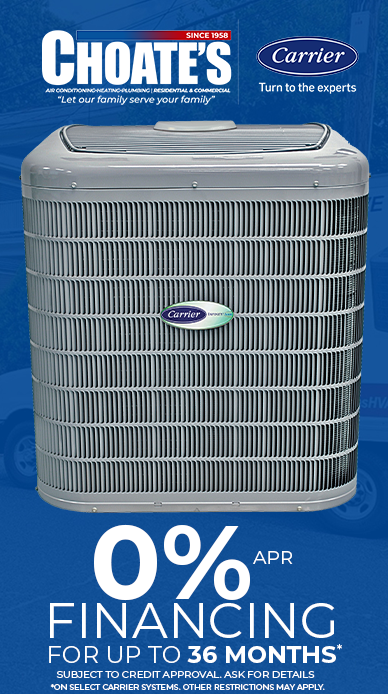901 755 4797
7 MUSTS for Protecting Your Home During Extreme Cold
There’s cold and then there’s COLD. During these chillier months, temperatures can quickly drop and with added ice, snow and sub-zero wind chills, battling the cold can be an even tougher task—especially for your home.
While your home is built to withstand the elements, when those elements exceed the normal limits you could find yourself dealing with some homeowner headaches. The bad news? There’s no one-and-done for safeguarding your home. The good news? Even so, with some basic strategy and planning, you can mitigate the risk and keep some common winter woes at bay—and that can save you time, headache, hassles and, of course, money. Here’s where to start…
1. Start with your outdoor pipes
It’s simple, but needs to be said—be sure to check your outdoor hoses, faucets and pipes before temperatures drop. A hose or outdoor faucet left on could easily freeze and burst or, even, defrost in spring, flooding indoor or outdoor spaces.
Ideally, disconnect all hoses, cover outside faucets with suitable covers—pick them up at any big box or hardware store for a few dollars—and have sprinklers professionally turned off. If you opt to go the latter alone, you’ll need to blow compressed air through your sprinkler system to ensure its properly drained, then shut off the water supply.
2. While you’re outside…
While you’re outside dealing with pipes and faucets, take a minute to check—and clean—gutters and downspouts. When it gets cold, it’s common for ice to form in these spots—and that can cause significant damage as gutters get heavier and heavier.
After that, hit steps and walkways with an ice repellent for an added layer of safety. If these areas are already covered with snow or ice, wait until temperatures rise slightly before applying. Lastly, bring in any outdoor plants that can’t stand up to the extreme cold—potted plants, for example.
Anything staying out year-round should get an extra layer of mulch or, even, an all-weather cover to prevent damage. These covers are ideal when temperatures dip below freezing—be sure to remove them when it gets warmer.
During this final walk-through, be mindful of anything that could cause problems during major winter weather. For example, low-hanging limbs, dead trees or missing shingles on your roof may seem like no big deal but, if a major storm hits, they could put you, your property and, even, your family at risk. Make note and, if needed, call a pro for assistance.
3. Insulate all exposed pipes
Whether they’re inside or out, identify and insulate any pipes exposed to the elements—and insulate them. Basic insulation can, again, be purchased at big box or hardware stores for a few bucks and, in minutes, can be wrapped around the exterior of exposed pipes. Once installed, your pipes will be less likely to freeze and burst when the temperature drops.
Keep in mind, even indoor pipes can be exposed. Double check pipes under your kitchen and bathroom sinks as well as those in your garage, especially if your garage isn’t insulated.
4. About those pipes…
Pipes are one of the most common issues plaguing homeowners in the winter. Even if pipes are insulated, be sure to take added precautions to ensure pipes stay freeze-free. Start by opening kitchen and sink cabinets surrounding pipes—warm air from your home will quickly surround pipes and help curb freezing.
Another simple strategy? Let faucets drip—just a little. A slight trickle through pipes prevents freezing.
5. Keep your home toasty and warm
Don’t wait until you’re literally feeling the chill to have your furnace checked out. At Choate’s, we recommend doing a quick fall check-up—but don’t panic if winter has already settled in. Get in touch now and schedule an inspection to ensure your furnace is running properly. During this check we’ll look for cracks, install a new air filter and confirm the thermostat is working correctly. If there are any issues, we’ll tackle them now before they become real problems.
This is also a good time to ensure your propane or oil tank is full, or that you have sufficient wood or coal, as needed.
Fall—or, now—is also a good time to have fireplaces and chimneys checked out. Lighting a fire on a cold winter night can be a great way to warm up your home—but if your chimney and fireplace aren’t clear of debris, you could cause unwanted smoke or worse. Do yourself a favor and have a professional inspection before the extreme cold hits—or, again, ASAP if this one didn’t make your pre-winter to-do list this time around.
6. Check your windows
It’s essential to check your windows ahead of extreme cold and weather. If you live in an area where heavy snow, wind or ice is common, consider putting up storm windows or installing window insulations.
Also, be sure any window AC units are covered—or, better yet, removed. Once that’s done, check for cracks or openings in your window and caulk or repair, as needed. Even the smallest openings can let cold air and moisture in. Draft snakes can also be good go-tos—apply these along window frames and sills to prevent drafts.
7. Be sure you’re stocked up
Batteries, windshield wiper fluid, salt for driveways and walkways, fuel for snowblowers—be sure you have everything you need for a major snowfall or extreme weather on-hand before you need it. Not only can these simple must-haves be tough to come by post-storm, you may not be able to get out and get them, which could leave your propery at risk of added damage. A quick check—and quick run to the store—now is an easy remedy.
Get in touch now for a no-obligation furnace, heating and plumbing assessment. Our expert team will check out your systems and ensure you’re taking the right steps to prevent freezing or other winter slowdowns—and, at the same time, to ensure your systems are ready to stand up to even the biggest chill.


